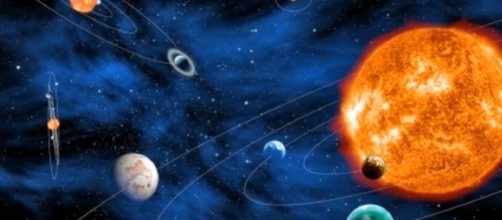A deep space mission to look for potentially habitable planets beyond our Solar System and hunt for signs of extraterrestrial intelligence among such planets was approved by the European Space Agency on Friday.
An ESA committee meeting in Madrid announced its decision to approve the PLATO Mission on Tuesday. It is believed to be a four-year-long mission scheduled for launch in 2026.
About the mission
Having been previously selected as a part of European Space Agency’s Cosmic Vision Program in 2014, the project is being spearheaded by Professor Dom Pollacco, an astrophysicist from Warwick University in the UK, whose scientists are playing a key role in this project.
Professor Pollacco has stated that the Plato mission will probably answer the following questions:
- Are Earth-like planets common and if so, to what extent?
- How rare are the salient features of our Solar System when compared to other star systems?
- A solution to Fermi Paradox – if intelligent life exists then why haven’t we made an extraterrestrial contact so far despite the enormous probabilities?
Instrumentation, working and mission mandate
34 telescopes are supposed to be mounted on one platform. This technology will make it possible to gaze at a large area of the sky at once.The telescope hub will employ the process of Transit photometry to achieve its goal. Much like NASA’s Kepler mission, it observes the decrease in a star’s luminosity when a planet passes in front of it.
The satellite will operate for a maximum of two years in order to capture the images of Earth-twins and will shift it’s view several times during the mission to look for as many exoplanets as it possibly can.For other properties such as mass, radial velocity method and Doppler spectroscopy method will be used in their estimation.Seismic activity in some host stars will also be investigated.
PLATO will be stationed at the Lagrangian points, where the gravitational pull of the Sun and Earth cancel each other and the probe will be able to maintain a stationary position.It will host the largest camera system ever in space, consisting of 136 charge coupled devices (CCDs).
Institutes and Teams actively associated with the Mission
- German Aerospace Center (DLR), Overall Mission head.
- Max Planck Institute for Solar System Research, processing of observations at PLATO Data Center.
- European Southern Observatory’s Extremely Large Telescope.
- Warwick University.
- James Webb Space Telescope.
A Pioneer in its own right
PLATO will be an array of telescopes rather than a single lens one. Featuring high-quality cameras, it will have the advantage of observation without any infringement of blur from other heavenly bodies or the Earth’s atmosphere for that matter.
Professor Heike Rauer from DLR-Berlin believes that with the concept and the rigorous precision of the instruments, they’ll be able to characterize rocky planets orbiting Sun-like G-dwarf stars very accurately. He also believes that PLATO will begin a new chapter in the exploration of extrasolar planets.


